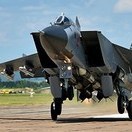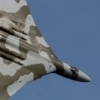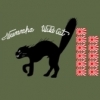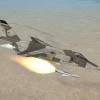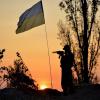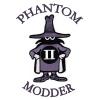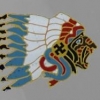Leaderboard
Popular Content
Showing most liked content on 05/14/2024 in all areas
-
6 points"1976, on the initiative of the head of the Air Force Research Institute, General Gaidaenko, supported by the Deputy Air Force Commander-in-Chief for Armament Mishuk, comparative tests and training combat were carried out between former South Vietnamese F-5E [of earlier series] vs MiG-21bis and MiG-23M fighters. Test pilots N. Stogov, A. Bezhevets, V. Kondaurov participated in the tests. These tests consisted of two parts: an assessment of the aircraft’s general performance and a comparative assessment. Moreover, at the stage of comparative assessment [air combat], each of the pilots took turns in MiG-21bis and MiG-23M and fought against F-5E (and vice versa). The technical staff who prepared the elegant American fighter for flight remembered it for its simplicity and thoughtfulness of design, and ease of access to serviced units. One of the participants in the study of the American aircraft, leading engineer of the Air Force Research Institute Marchenko, noted such an advantage of the fighter as a glare-free instrument panel: high-quality coated instrument glass in any lighting did not create problems for reading information. Air Force Research Institute engineers puzzled over the purpose of the button at the bottom of a deep niche in the cockpit for a long time. As it turned out later, it was intended to remove the weapon lock with the landing gear extended. Soviet test pilots appreciated the comfort of the cockpit, good visibility from it, rational placement of instruments and controls, easy takeoff and excellent maneuverability at high subsonic speeds. F-5E flew in Vladimirovka for about a year until one of the landing gear tires collapsed. After testing at the Air Force Research Institute, the aircraft was transferred to TsAGI for static tests, and many of its components and assemblies ended up in the design bureaus of the aircraft industry, where interesting technical solutions from Northrop were used in the development of domestic aircraft. These tests are recalled very interestingly and in detail by their direct participant, Honored Test Pilot of the USSR, Hero of the Soviet Union, Colonel Kondaurov in his book “A Life-Long Runway.” After a thorough analysis of the materials, the conclusions of F-5E vs MiG-21 tests were as follows: MiG-21bis had better acceleration characteristics and climb rate at speeds of more than 500 km/h – due to higher thrust-to-weight ratio MiG-21bis had better angular speeds of turns at speeds of more than 800 km/h [MiG turned better at higher speeds] At speeds of 750-800 km/h, neither aircraft had any advantages - the fight was on equal terms, but close combat did not happen due to the large turning radii of both fighters At speeds less than 750 km/h the F-5E had the best maneuverability characteristics, and this advantage grew bigger with increasing altitude and decreasing flight speed F-5E had a wider maneuvering area where it was possible to perform steady turns with a radius of less than 1800 meters [speeds at which F-5 could perform tight turns] F-5E had better visibility from the cockpit and a more comfortable cockpit layout F-5E had more ammunition, but a lower total rate of fire of the guns, which allowed to have a longer firing time Kondaurov wrote about the American fighter: “Not inclined to perform vigorous maneuvers in clean wing configuration [wing mechanization not activated], it was transformed when the pilots transferred it to the maneuverable configuration [slats and flaps activated]. From a heavy “hulk” it turned into a swallow.” It was noted that without the use of wing mechanization, the F-5E had no advantage in maneuverability. On F-5E of the first series (one of these aircraft was tested by Soviet pilots), the pilot, using a switch mounted on the throttle stick, could set the slats and flaps to 5 fixed positions. On later series F-5E, the deflection of slats and flaps was made automatic - based on a signal from the altitude and speed sensors. At speed above 0.85 Mach forward slats of F-5 were not active [neither version of MiG-21 had leading edge slats]. Analysis of the tests carried out forced Soviets to reconsider the degree of importance of certain parameters when assessing the maneuverability of an aircraft. Tactical techniques for conducting air combat with F-5E and recommendations for fighter pilots were developed. The general meaning of these recommendations was as follows: to impose a battle on the enemy in conditions where the MiG-21bis had advantages over F-5E, and to evade the battle (or try to get out of it) under unfavorable conditions - make a good use of the advantages in speed and acceleration characteristics of MiG-21. [same vibes to “American pilots encounter A6M in Pacific and learn to not engage into slow turning dogfights, maintain energy instead”] The results of training dogfights with MiG-23M were similar. At higher speeds, the advantage likewise passed to MiG-23M, due to better acceleration characteristics and thrust-to-weight ratio. Based on the test results, work began on introducing leading edge slats on the next modification of MiG-23 [ironically, almost all versions of MiG-23 had forward flaps, but those were used only for take-off/landing. Fully automatic forwards flaps for maneuvering were enabled only on MLD version]. With F-5E's armament [cannons and Sidewinders], the main problem for it was entering the Weapon Employment Zone. At speeds of less than M 0.85, F-5 did well and could tail both MiGs on the second turn. At higher speeds F-5 could no longer do anything. And indeed, at higher speeds MiG-21 and MiG-23 both performed well against F-5. In fact, at these speeds MiG-23M performed the best because it could attack from any vector [MiG-23M had all aspect R-60 missiles and IRST while both MiG-21bis and F-5E had no IRST and assumed to use older “tail-chaser” missiles]. Moreso, MiG-23M was the only fighter of these three capable of BVR combat and could engage F-5 from safe distance. For this reason, BVR combat was not even simulated as F-5 couldn’t really do anything in such scenarios."
-
6 pointsI don't know ... I just don't know. It's all a Mystery to me!! (no need to push ... I know where the door is ...
-
5 points
-
5 pointsyup, that sure did work!! the secondary tacan fins are/were the 2 flat features on the fin. I always thought they were some kind of stabalizer goodie!! again, thanks brothers!! I owe you both a beer!! and, of course, you'll be 'mentioned in dispatches' in the readme!!
-
5 pointsThe reason the tacan mesh is not removed by the component trick is there's another mesh named tacan on the vertical tail. The "Hide2" component removes the tacan of the tail. I tried to add a third component [Hide3] ParentComponentName=VertTail ModelNodeName=tacan DestroyedNodeName=tacan DetachWhenDestroyed=TRUE HasAeroCoefficients=FALSE but it didn't solve the issue. Once the tacan mesh of the tail is removed, the other tacan mesh of the fuselage stays ( ---> see the fix below) Add "MassFraction=0.0" to all removing / hiding / showing components. ------------------------------------------------------------------------------------------------------------------------------------- Edit : Jimbib beat me to the line xD Try this : //antenna removals// Component[008]=Hide1 Component[009]=Hide2 [Hide1] ParentComponentName=Nose ModelNodeName=Objet03 DestroyedNodeName=Objet03 DetachWhenDestroyed=TRUE HasAeroCoefficients=FALSE MassFraction=0.0 [Hide2] ParentComponentName=Nose ModelNodeName=Nose DestroyedNodeName=tacan DetachWhenDestroyed=TRUE HasAeroCoefficients=FALSE MassFraction=0.0 --------------------------------------------------------------------------------------------------------------------- --------------------------------------------------------------------------------------------------------------------- If you want to remove both tacan meshes : //antenna removals// Component[008]=Hide1 Component[009]=Hide2 Component[010]=Hide3 [Hide1] ParentComponentName=Nose ModelNodeName=Objet03 DestroyedNodeName=Objet03 DetachWhenDestroyed=TRUE HasAeroCoefficients=FALSE MassFraction=0.0 [Hide2] ParentComponentName=Nose ModelNodeName=Nose DestroyedNodeName=tacan DetachWhenDestroyed=TRUE HasAeroCoefficients=FALSE MassFraction=0.0 [Hide3] ParentComponentName=VertTail ModelNodeName=VertTail DestroyedNodeName=tacan DetachWhenDestroyed=TRUE HasAeroCoefficients=FALSE MassFraction=0.0
-
3 points
-
3 points
-
2 pointsThis may or may not be the cause... but it looks like in the main LOD I grabbed from the link below there are two 'tacan' meshes in the model, one linked to the fuselage and another linked to the VertTail, could that be it?
-
2 points
-
2 pointsIt's a bit chauvinistic maybe, but I really love scooting around in the Northrop NF-5A Freedom Fighter! Dropping iron or spraying lead... all in good fun!
-
1 point
-
1 pointwhere's the Whiskey from? ------------------ gawd, even the recce boys gotta go show off......
-
1 pointPossible it is getting bottlenecked by not being optimised for some of the modern hardware features yes. I would try running at lower fps - I only go to 60 but less fps uses less resource. Further mitigation could be changing other options in the 3D settings (e.g. NVIDIA control panel if you have that) - but will be trial and error as to what works on your specific setup as always. Then maybe lower some of the in game settings and try that out.
-
1 pointI'd have never thought of that!! Who knew you could have 2 with the same name! I'm gonna go test this RIGHT NOW!!! thanks gents!!
-
1 pointFair enough. Here's the Plugin to align pivotpoints, just in case someone is interested. Precise Align v1.2.7z
-
1 pointGreat solution Cliff! Didn't know that was possible with two meshes with the same name, this would be a good addition to the knowledge base.
-
1 point
-
1 pointNorth Vietnam captured a number of F-5A and E and used them till end1970th/early 1980th. One F-5E was given to Poland, one to Czechoslovakia and an unknown number to the Soviet Union. Some ended in vietnamese Museums, the rest was sold to Iran. The photos were taken during the soviet flight test of the F-5E: A lot of features of the F-5E were later used for MiG-29 and Su-27 development.
-
1 pointdepends on what im working on, some are quite fun to fly while others are pigs that im putting lipstick on in general, i do prefer the air to ground and support mission sets, and typically fly the jets best suited to that (A-10s, A-7s, F-4s and the range of heavies)
-
1 point
-
1 point
-
1 point
-
1 pointKorea, 1968. The Navy has decided to do some COIN Training in a real-world environment, without the pesky AAA & SAMS of Vietnam. Where better than the "Land Of The Morning Calm"? "What could possibly go wrong? It'll be a milk-run, and you'll be in and out before the NK's get wise." (The guy in back has that look that says, "I am so screwed.") Intel was correct; there's the target, and so far, NO bad guys!!!! Emptied the pods and dropped the empties. (Remember the back seater's look?) The bad guys showed up to spoil the day but couldn't get a good run in because we were so low. They got chased off by a 4-ship of F-8's that came to our rescue.
-
1 point
-
1 point
-
1 point
-
1 pointand the Bear says "STARTDOINSOMEOFTHATPILOTSHITHESSHOOTINTHATGREENSHITATUSLETSGOLETSGOLETSGO" although anyone else including the pilot heres "um"....
-
1 point
-
1 point
-
1 point
-
1 point
-
1 point
-
1 point
-
1 point
Important Information
By using this site, you agree to our Terms of Use, Privacy Policy, and We have placed cookies on your device to help make this website better. You can adjust your cookie settings, otherwise we'll assume you're okay to continue..





